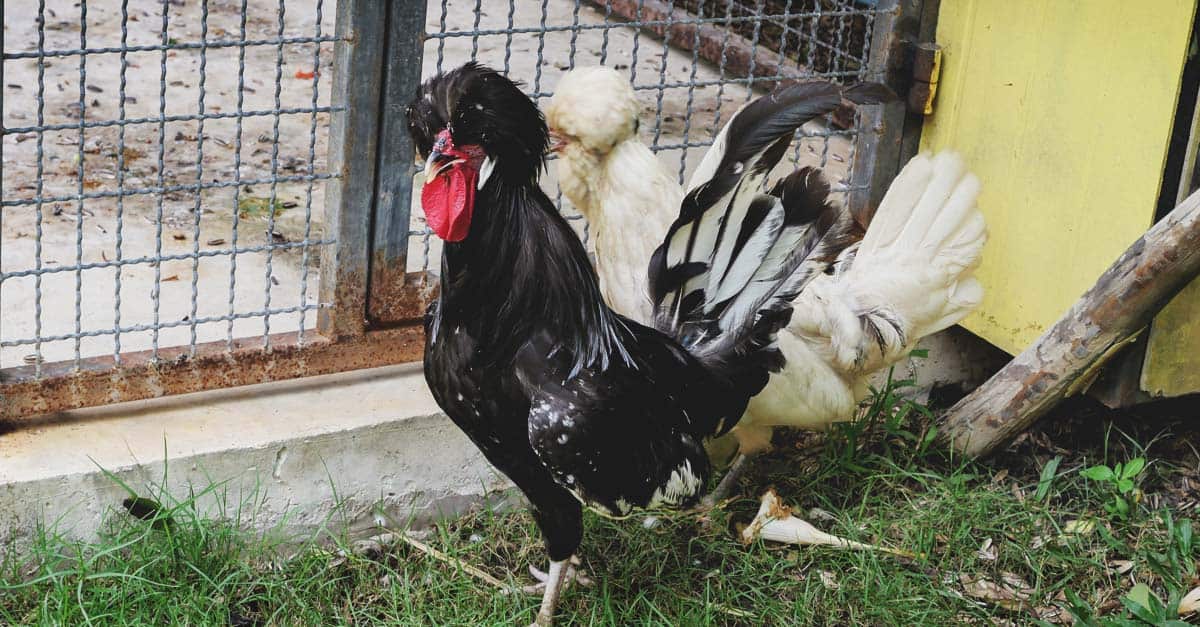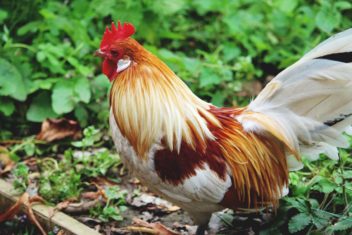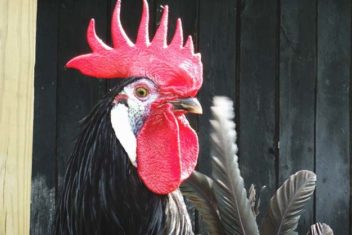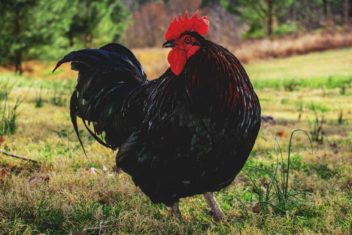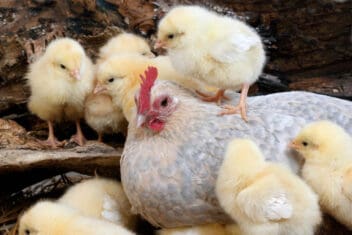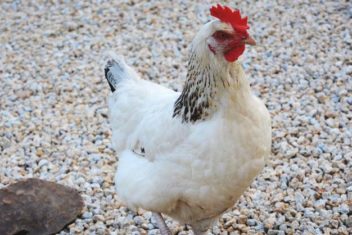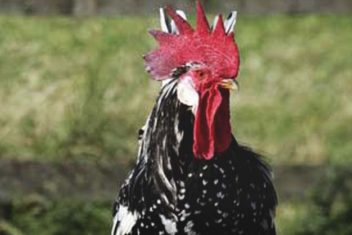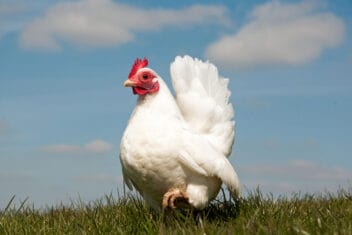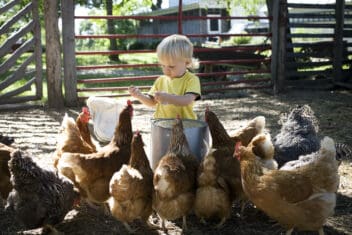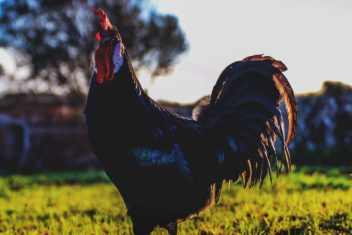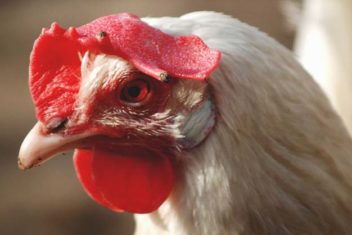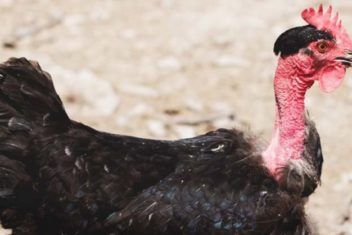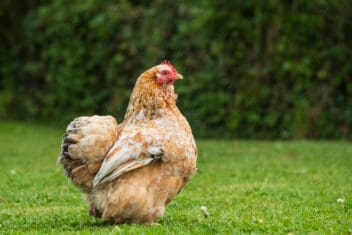Very few chickens look as unique and outstanding as the Houdan does. If you like birds that stand out in the crowd with quirky characters, look no further. Houdans proudly carry a headdress of feathers and a beautiful feather pattern that spices up any chicken coop.
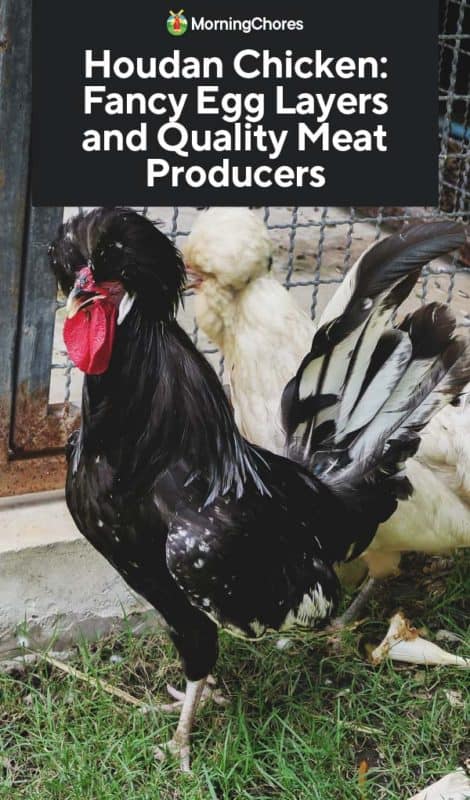
About Houdan Chickens
The Houdan is not a breed primarily raised for either meat or egg production but can perform fairly well in either of those fields. This is a French breed with some interesting characteristics that you don’t find every day in a bird.
The Mottled Houdans made their way from France to England and arrived in America sometime around the 1960s. In 1974, Mottled Houdans was officially accepted into the Standard of Perfection with the American Poultry Association. White Houdans has since been recognized by the American Poultry Association in 2014.
Houdan Characteristics
1. Size and Weight
As a dual-purpose breed, Houdans are not petite chickens, but they are about average size for dual-purpose chickens. Male Houdans will tip the scales at approximately 8 pounds when they reach a fully grown weight. Houdan Hens are a bit smaller, weighing around 6.5 pounds full grown.
2. Temperament
Houdans are fairly well known for having very docile and friendly dispositions. You aren’t likely to find a mean Houdan, but if you did, it would be a rooster. Hens of this breed rarely get the inclination to set and go broody. This is a breed that does well for showing because Houdans are easily handled and tame.
3. Egg Production
Houdan hens are not the most efficient egg producers, but they aren’t complete slackers in the egg-laying department either. Plenty of daylight and proper nutrition will ensure the best possible production from your hens. You can expect about 150 eggs in a year from a single hen.
4. Meat Production
Although the meat quantity on Houdans is not the highest, quality is definitely in the Houdan meat. This breed has achieved the sought after Label Rogue, which is a sure sign of high quality in France.
Taking Care of Houdans
1. Feeding and Nutrition
From hatch and for the first few months of their lives, Houdan chicks need a high-quality chick starter. Once your growing birds are between 14 and 16 weeks of age, it is a good time to transition them to laying feed.
As your hens begin laying, you may find that they need supplementary calcium to produce stronger eggshells. Oystershell can be found at nearly any feedstore and supplemented in a separate dish so your hens have all the calcium they need.
2. Housing and Fencing
Houdans need a tight and dry chicken coop that will shelter your birds from the elements and keep them locked away from predators. Inside this coop, 4 square feet per chicken is ideal to ensure everyone has adequate space so overcrowding is avoided. For your run, 10 square feet minimum is recommended, with more space always being a welcome bonus for your birds.
These birds handle confinement well and do best in such an environment due to their limited vision. The gorgeous crest of feathers on this breed’s head makes it harder for them to spot oncoming predators. Free-ranging is discouraged for this breed, especially if you don’t have a clear-sighted rooster watching over your flock.
3. Health Issues and Care
All chickens are susceptible to the same vast number of poultry ailments and illnesses as well as internal and external parasites. Keep a close eye on your flock to catch sickness signs such as runny nose or eyes, lethargy, or loss of appetite so you can quarantine and treat your bird for the illness.
Worms, mites, and lice all need immediate treatment if they are discovered within your flock. Luckily, despite the fact they are pesky to get rid of, parasites usually aren’t fatal unless they are left untreated.
4. Breeding
Breeding chickens with interesting characteristics such as the Houdan is always a fun project. Seeing the features such as crests and beards on chicks just makes everything ten times cuter and a joy to watch them grow up.
Houdans are listed as threatened by the Livestock Conservancy, so anyone breeding these chickens would be helping to recover and maintain numbers so we don’t lose such a beautiful breed to extinction.
Houdan Breed Alternatives
1. Polish
If you’ve ever seen a Polish Chicken before, you may have noticed the similarities between the Polish and Houdan chickens. Polish hens have slightly better egg production than Houdans in addition to being found in many more stunning color variations such as silver and buff laced.
Did You Know?
Houdans proudly sport an extra toe on both of their feet! While most chickens carry around four toes per foot, Houdans have five toes per foot.
This is a chicken breed that will add a lot of diversity to a beautiful chicken flock as well as make an excellent pet. You won’t regret the addition of such an interesting chicken breed.
